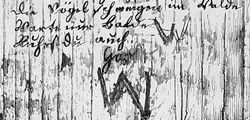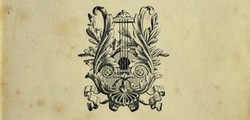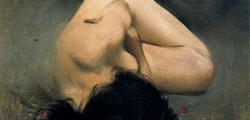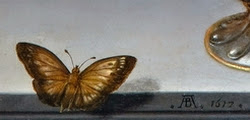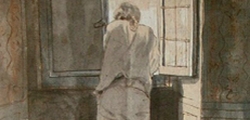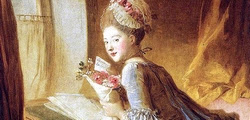Belén Roig closes the four weeks dedicated to the students of the Master in Lied of the ESMUC presenting a beautiful lied by Mahler. Every year Viviana Salisi and I encourage students (with little succes) to share their interpretations of the lieder they present; we especially thank Belén for sharing her recording of Wer hat dies Liedlein erdacht, a live recording from four years ago. Thank you so much, Belén!
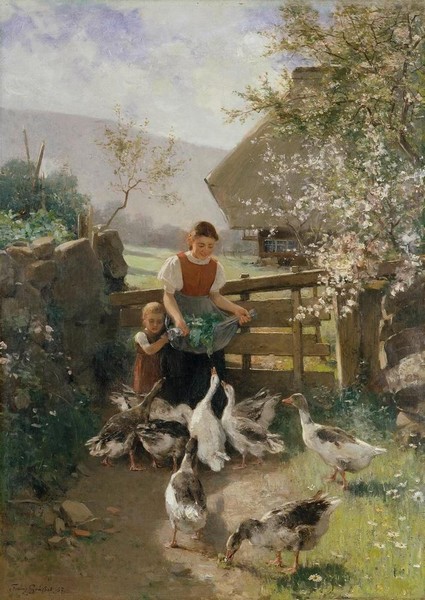
Recently I have read a book by Norman Lebrecht titled “¿Why Mahler? How One Man and Ten Symphonies changed our world”. The author explains that Gustav Mahler’s music is received by many as a source of spiritual revelation. Likewise, on the webpage “Mahlerlist” we can read the testimonies of people telling how Mahler’s music has been significant and therapeutic throughout their life.
It also has been the same way for me, since a very early age I have felted a great connection with the Mahlerian’s sonority. Wer hat dies liedlein erdacht? (¿Who came up with this little song?) Was one of the first works that I heard being just a child, rummaging in my father’s home library I found a wonderful CD in which Lucia Popp sang this song, so full of grace, enthusiasm and infatuated character. Written in 1892, it is the fourth lied of the album Des Knaben Wunderhorn (The boy’s magic horn).
All texts of these group of songs belongs to a set of more than 500 German tales and poems compiled from folklore and oral literature between 1805 and 1808 by Ludwig Achim von Anim and Clemens Brentano. Mahler wrote the music for twenty-four of the Wunderhorn poems. It is funny how he discovers these texts. One evening, the writer met Karl von Weber, Carl Maria von Weber’s grandchild. Delighted to be acquainted with the grandson of one of the key figures of Germany’s opera, he started a good friendship with Carl and her wife, Marion, who he visited every day during the adaptation process of a Spanish themed opera called Los Tres Pintos, which he had trusted Mahler, being his grandfather’s unfinished project. During that time, a children’s book - Des Knaben Wunderhorn- that was borrowed by the marriage’s children, they suggested an idea for his First Symphony and it was because of it that this period of Mahler’s life (1887-1901) is known as “The Years of Wunderhorn".
In fact, this cycle was the first beam of light after a long writing drought period and was a mouthful of fresh air in his life. The repeated deaths in his family, his health issues, the work overload as Hamburg’s Opera Director and the failure of his first Symphony where the reasons of why this wasn’t a great period for Mahler.
Wer hat dies liedlein erdacht? Is aesthetically far from all the misfortune Mahler had to live in that time, becoming one of the most known songs of the writer (popularity that the German Soprano Elisabeth Schumann contributed).
The lied represents a typical pastoral scene where it is expressed in a loving way the admiration for the innkeeper’s daughter who lived in a hill. There is a wink to the geese that appears in the poem, is exactly the costumbrism painting of Franz Xaver Gräßel that entitles this article, it is contemporary to the song and expresses the relaxed and popular character of the poem. One of Mahler’s characteristic procedures is the keen use of the popular material emphasizing life’s simple people and the charm of long passed days. While the texts, because of the form and imaginative conception, sparkled romantic familiar resonances in the listener.
It is worth mentioning that in post-romanticism the lied acquires a new dimension because par excellence is the time of symphonic lied. The writers conjugate the intimacy and simplicity that is inherent in a song and is mistaken with the orchestral sonority, creating a new angle for concert songs. Then, in front of the double conception of these lieder the pianists can nurture their interpretation watching the colors that the orchestra have to offer, enrichening their view.
In this regard, Mahler reigned alongside his colleague Richard Strauss. Moreover, another completely mahlerian aspect is the direct or indirect relationship between their lieder and their symphonies. It is hard to find a symphony that does not have part of their imaginary in their symphonic songs. In this way, is the exception and their thematic is exclusive, not repeating it in his work.
Musicaly, the Lied style is a dancing one, in a 3/8 time and in the form of a ländler (Austrian dance). Reminds of Bach’s dances, in addition, because of the melismatic design in the voice (group of successive notes which are sung in one single syllable) that are doubled by strings and winds, reminding us the Ich will mein Herze schenken from St. Matthew Passion, rich in circular rhythms that agitate making of it the most difficult technical part of the interpretation of the vocals.
The recording, in this case, is from the author of this article. It is the orchestral version conducted by the Maestro Pablo Marqués, joined by the Young Symphonic Orchestra of Castelló in a concert from the year 2006. It is a youthful version, full of hope. Now heard, I recognize my lack of precision in german diction and naturally in some details related to interpretation and the development of the voice instrument. Therefore, the Lied Master of the Escola Superior de Música de Catalunya gives young singers, lovers of german music, the chance of specialize in this gender and be able to evolve with them.
Sobre la autora
Belén Roig (Valencia, 1991). Graduated as an opera singer and violin player, extraordinaire vocal end of career award. Her formation expands in the Máster Lied of the Escuela Superior de Música of Catalunya. She debuted with an outstanding soloist performance with the Orquesta Simón Bolívar from Venezuela, the Victoria de los Ángeles Festival in Barcelona, Ópera of Oviedo, Orquesta Sinfónica of Madrid or the Quincena Musical of San Sebastián.
Dort oben in dem hohen Haus,
Da gucket ein fein's, lieb's Mädel heraus,
Es ist nicht dort daheime,
Es ist des Wirts sein Töchterlein,
Es wohnt auf grüner Heide.
Mein Herze ist wund,
Komm, Schätzel, machs gesund.
Dein schwarzbraune Äuglein,
Die haben mich verwundt.
Dein rosiger Mund
Macht Herzen gesund.
Macht Jugend verständig,
Macht Tote lebendig,
Macht Kranke gesund.
Wer hat denn das schöne Liedlein erdacht?
Es haben's drei Gäns übers Wasser gebracht,
Zwei graue und eine weiße;
Und wer das Liedlein nicht singen kann,
Dem wollen sie es pfeifen. Ja!
Up there on the mountain, in the high house,
There peers out a fi ne, dear maiden!
There is not her home!
She is the innkeeper’s daughter!
She lives on the green heath!
My heart has a wound!
Come, sweetheart, make it well!
Your dark brown little eyes,
they have wounded me!
Your rosy mouth
makes hearts well.
It makes young people rational,
brings the dead back to life,
makes the ill healthy.
Who then thought up this pretty, pretty little song?
Three geese have brought it over the water!
Two grey and one white!
And whoever cannot sing this little song,
to him they will whistle it! Yes –
(translation by Dr. Renate Stark-Voit and Thomas Hampson)


